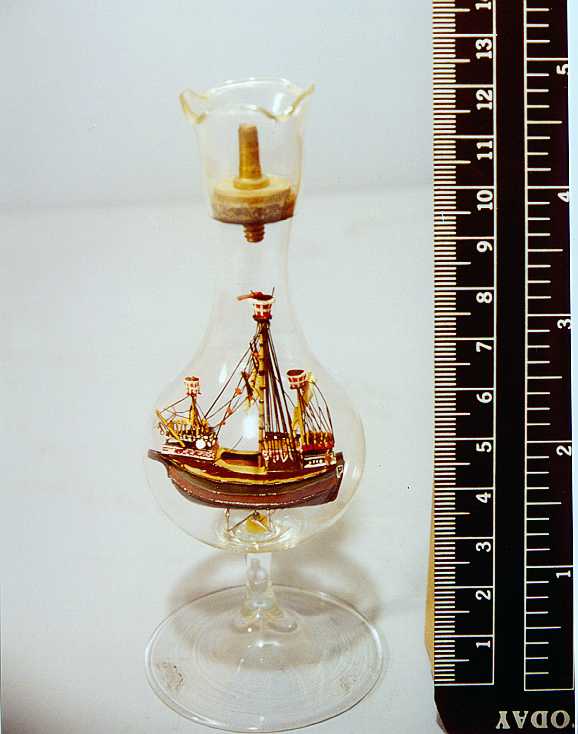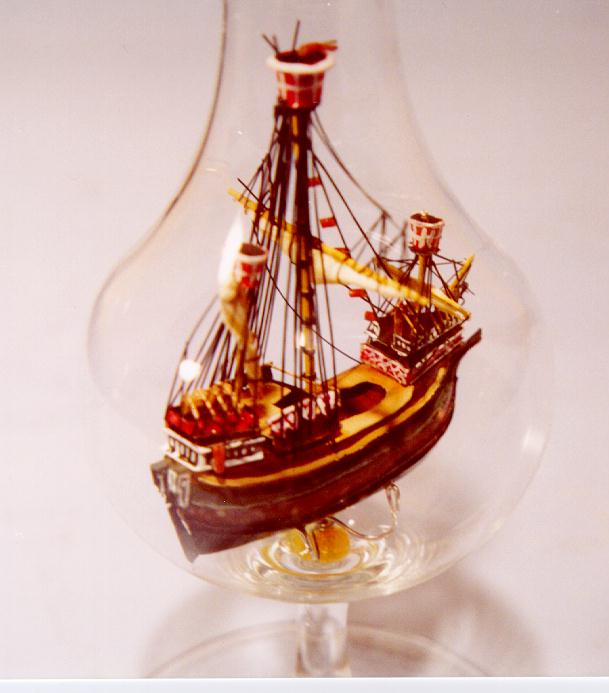
A Flemish Carrack:

The Ship:
According to an engraving of a flemish artist of the XV century (ca. 1490) , whose initials were W.A., we are able to retrace with reasonable accuracy what a typical ship of the time would have looked like
The carrack (or Kraeck, in the engraving) was a deep going vessel, in this case we suppose a heavily armed merchantman, with 2 forecastle decks, a long one aft, above the quarterdeck. It carries guns, and on the main mast top there are spears and a small falconette. Schrapnel (munnition) was hoisted in small containers and a grapnel (boarding hook) dangles from the bowsprit.
We see shields hanging from the gunwales, and awnings to protect the deck seamen/soldiers from spars or other dbris falling from the rigging in case of combat.
The Model:

In this stern/quarterdeck view, we can see the model ship. It is built inside a small flower vase, at approximately 1:1100 scale (compare with ruler). Note the small poop cabins, overhanging barrels, painted friezes.
The model stands upright inside the vase, on a piano wire base. Hull had to be split in three pieces, to allow assembly through bottleneck. Details include boarding awnings, castles, poop cabins shields on gunwales, tops with spears and small gun. Ammo loading hoist and bags. Sails are shown furled, as on the original engraving.
The challenge here was assembling/rigging each mast from the neck under, beginning with mizzen, then with foremast and finally main mast. Since the work space inside the bottle is constantly reduced, the last mast practically does not allow any movement of tools. Please note that neck has a narrowing approximately midway towards the bottom.

Bow side view. Note the small grapling iron, the double forecastle, the mast foot, the reinforcement strakes. Oddly enough, I sued a tap water valve to plug the bottle during preparation, but since I didn't find a suitable plug, the valve remained there(see first photo) . Sorry!
Bibliography. The Ship - Björn Landström. Historische Schiffsmodelle. W. zu Mondfeld, The Book of Old Ships, Henry B. Culver.
Return to Eddy's Thimble Pier Top page
Wish to take a look at the SIB Gallery?
(c) 2000-2020 Eduardo Raffaelli. Buenos Aires . Argentina